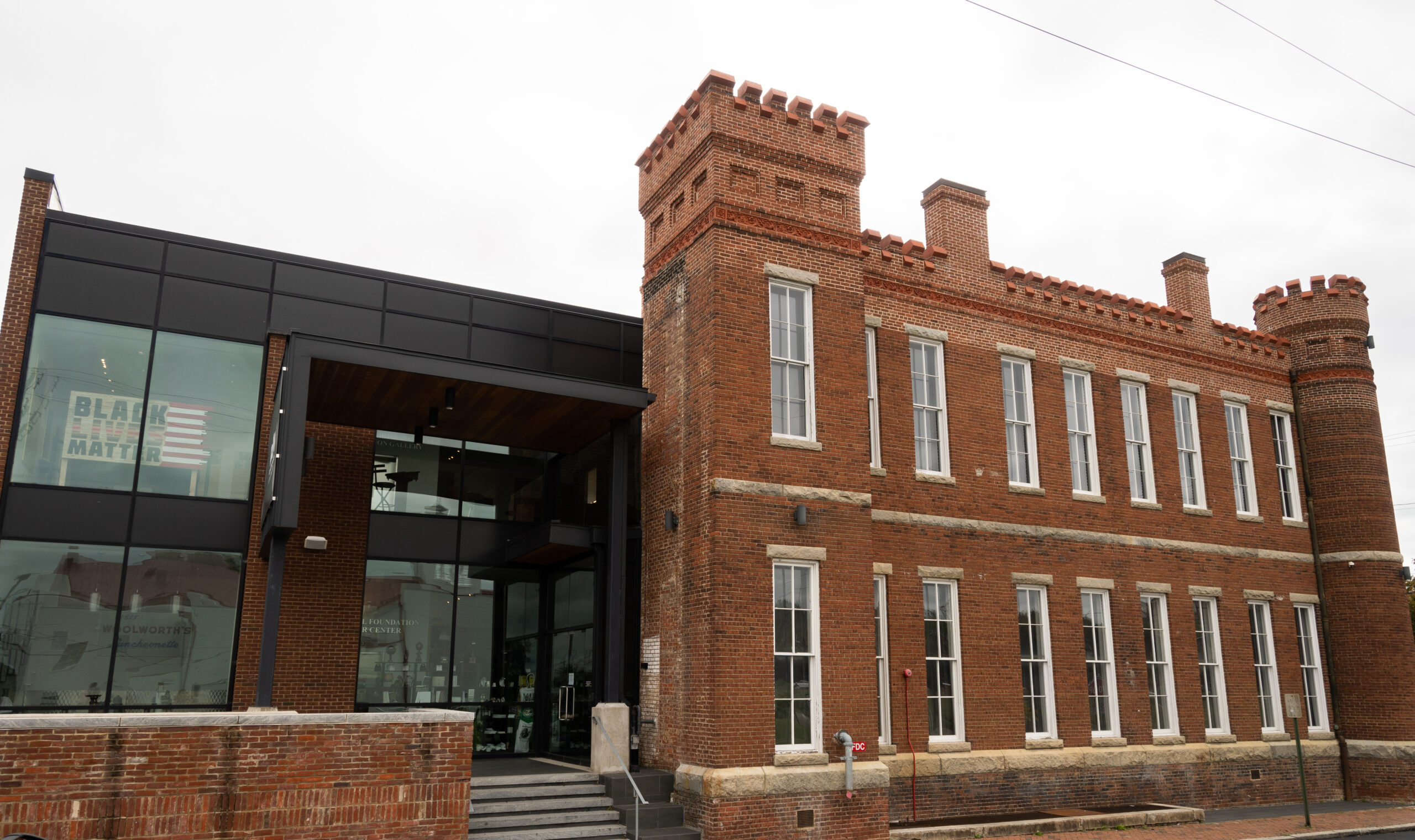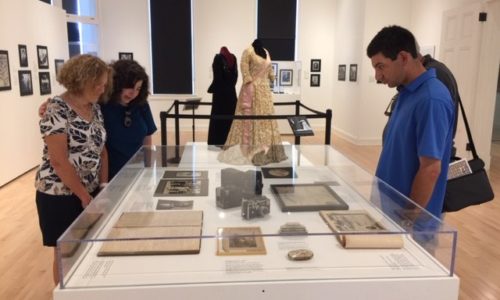Open Wednesday - Saturday 10 AM – 5 PM*
About and History
WE PRESERVE STORIES THAT INSPIRE.
The mission of the Black History Museum & Cultural Center of Virginia (BHMVA) is to share, interpret, preserve, exhibit, and commemorate the rich history and culture of African Americans throughout the Commonwealth of Virginia and beyond.
Through cultivated partnerships and innovative programming, BHMVA aims to restore a profound sense of cultural pride, wellbeing, and unity within the diaspora while fostering a more open and inclusive society. The museum’s dedication to the collection, documentation, and study of the history and culture of African Americans highlights stories that are often untold and forgotten, and actively contributes to the ongoing narrative through scholarship and curation.

The house, built in 1832 by German descendant Adolph Dill, incorporates both the Federal and Greek Revival architectural styles. Under the leadership of Maggie L. Walker, the country’s first female and Black bank president, the Council of Colored Women purchased the house in 1922. And then in 1932, it became the Black branch of the Richmond Public Library and was named in honor of Rosa D. Bowser, the first Black female school teacher in Richmond.
In the spring of 2016, the Museum adopted a new location—the Leigh Street Armory. Prior to being the new home of the Museum, the Leigh Street Armory had endured a fire and decades of neglect and abandonment. In 1981, the city declared the armory as surplus property. As a result, the building remained padlocked until 2002. However, a grant from Save America’s Treasures, a national historical site preservation program, agreed to fund the armory’s rehabilitation. The structure had some of its exterior brickwork redone, new floors and a roof installed and was soon up-and-running once again.
The Black History Museum & Cultural Center of Virginia celebrates the rich culture and moving histories of African American people in Virginia and their contributions to our magnificent country. We endeavor to tell a more complete and inclusive story about America.
Our mission is to preserve stories that inspire. For many of us Black history is reduced to a handful of moments and events. We remember the courageous and popular stories of Harriet Tubman, Rosa Parks, and Martin Luther King, but there are many, many more. Although Virginia’s past is sometimes painful, we can learn from our ancestors and allow that history to fuel our future.
Founded in 1981 and opened to the public ten years later, the Black History Museum blazed an amazing pathway. After years of planning and fundraising, the museum’s headquarters moved to the Leigh Street Armory from its nearby location which it had occupied since 1991.
Walking into the newly renovated museum for the first time is a pleasant surprise for both long-standing members as well as new visitors. Its sleek interior is a stark contrast to the 1895 armory exterior. But the road from modest to majestic was challenging at best. After serving as an armory for Black soldiers only four short years, in 1899 the battalion was dissolved. The building later served as a school and then during World War II it was a social and recreational center for Black servicemen. From the early 1980s when a fire almost destroyed the building, until 2002, when a National Park Service grant funded a new roof, the facility so rich in Black associations was abandoned and the landmark became badly deteriorated. However, appalling its condition, our Board of Directors was not deterred.
Our new museum boasts a modern interior that is inviting, spacious, and perfectly connects past and future. A café area with an original Woolworth’s sign is reminiscent to the downtown counter where students held a sit-in against segregation.
The first floor galleries feature digitally enhanced permanent exhibitions exploring critical stories and artifacts detailing Emancipation, Reconstruction, Jim Crow, Desegregation, Massive Resistance, and Civil Rights eras. A 35-foot multi-paneled touch screen offers a timeline of significant dates and activities. The lower level also contains interactive children’s exhibitions in nooks that are both educational and fun like the simulated speedway with Wendell Scott, the first Black winner of a Nascar race.
In the midst of historic interactives there are two prominent contemporary pieces — 13 foot likeness of Virginia native Arthur Ashe commanding attention as the model for a Monument Avenue statue by Paul DiPasquale. This 600-pound figure commemorates the only Black male tennis player to win singles at Wimbledon, the US Open and the Australian Open. Second, the floor to ceiling abstract sculptural interpretation of Hampton University’s Emancipation Oak pays tribute to the site of the first Southern reading of the Emancipation Proclamation in 1863. The second floor galleries are reserved for nationally traveling exhibitions as well as exhibitions by local artists and community organizations.
The Black History Museum & Cultural Center of Virginia offers a dynamic multi-dimensional visitor experience. We want patrons to feel welcome when they arrive, engaged while visiting, and eager to return after they leave. To complement the presentation of historic storytelling, contemporary art is popular in the upstairs galleries.
The opening exhibition in our new facility, “Funky Turns 40” is a collection of animation cells from the late 1960s and 70s from TV shows like the “Jackson 5ive,” “The Harlem Globetrotters,” “Josie and the Pussycats,” and “Fat Albert.” The next exhibition highlighted Romare Bearden, an iconic artist whose work celebrates and examines African American culture. Widely recognized as one of the most important visual artists of his century, this work has been displayed around the world. The exhibition, “Vision and Activism,” included limited edition prints, collages, ink drawings, oil and watercolor paintings.
Former exhibitions also include “Double Vision” by Murry DePillars who was both an accomplished artist and dedicated Dean of VCU’s School of the Arts from 1976 until 1995. A visionary with a dual passion, DePillars (1938-2008) applied his fervent artistic mission to the development of VCU’s School of the Arts into one of the largest art schools in the country while maintaining his prolific artistic practice in innovative ways.
The“Fighting for the Right to Fight” exhibition highlighted the experiences of African Americans during World War II. It examines how the hopes of equality inspired many to enlist, even though racial segregation and discrimination were part of daily life in the United States. And “Yesterday’s Stories, Today’s Inspiration” provides a pictorial history of Virginia from the 1850s to 1950s as told through moments captured by the camera’s lens. These photographs, many from the museum’s collection, provide extraordinary glimpses of the African American experience during enslavement and freedom.
Children’s programming has attracted families from the neighborhood as well as across the city and counties. From artistic expressions to guided tours with scavenger hunts, children are coming to BHMVA for an educational experience that’s also fun. Our annual Children’s Book Festival is attended by 600 first and second graders from public schools in Chesterfield, Hanover, Henrico, and Richmond who participated in interactive sessions with African American authors and left with a backpack of five books for summer reading.
The Dominion Energy Community Room at the museum is a popular place to make community connections. We have hosted thousands of patrons. In addition to private events, BHMVA programming includes community conversations, literary presentations, social gatherings, documentary premiers, historic portrayals, and cultural activities. Community connections are essential to the success of BHMVA and must therefore engage community members for their input and feedback and also to participate as volunteers.
Many thanks to our steadfast supporters, who have played a pivotal role in preserving our important past and inspiring a bright new future. We sincerely appreciate their invaluable support of this critical endeavor. We love hearing their stories and we are so grateful for their partnership in helping to restore the Armory’s historic presence while preserving the legacy of our ancestors. Our continued success is dependent on the ongoing generosity of current members and and donors along with the recruitment of new members and donors.
Here are four ways you can help:
1. Join and renew your membership annually so we can count on your active involvement;
2. Bring your family to visit, learn, and share our history;
3 Make a donation because each and every dollar helps our ongoing operations;
4. Share your talent – become a volunteer docent
Address
122 West Leigh St.
Richmond, VA 23220
Hours
Wednesday- Saturday
10 am–5 pm
Contact Us
(804) 780-9093
info@blackhistorymuseum.org
Black History Museum & Cultural Center © 2022. All Rights Reserved
Site designed by Visual Appeal, LLC






